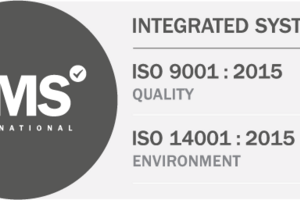04 March 2010
Companies not ready for Carbon Reduction Commitment
 Thousands of businesses are woefully unprepared for a government pollution-cutting scheme that comes into force in six weeks. Failure to comply will mean daily fines running into tens of thousands of pounds.
Thousands of businesses are woefully unprepared for a government pollution-cutting scheme that comes into force in six weeks. Failure to comply will mean daily fines running into tens of thousands of pounds.
The Carbon Reduction Commitment (CRC), which requires companies to measure, report and pay for carbon-dioxide emissions, comes into force on April 1. It is aimed at companies with annual power bills of more than £500,000 and is expected to ensnare supermarkets, hotels and other firms that escaped the EU’s stricter programme that cracks down on energy producers and heavy industry.
Bob Hall, Director at Greenlite Lighting Solutions believes that with only a month to go before the CRC takes effect; most businesses still do not understand how to comply with it. Others remain unaware of its existence.
The government says the CRC will remove 4.4m tonnes of carbon dioxide a year by 2020 and save businesses £1 billion in energy bills. But it has angered some executives who claim it is too complex, will penalise growth and hurt their reputations.
From April 1, companies must start measuring their annual energy usage and emissions. Using that data as a baseline, they will then have to buy carbon-dioxide emission permits from April 2011. At the end of each year they will be ranked in a public league table. Those that cut energy use most will be reimbursed for the cost of the permits and will receive a bonus drawn from the worst performers, who will get back less.
The start-up phase of the scheme is riddled with deadlines for registration and data submission. Failure to meet them will result in a fixed fine of £5,000. An additional £500 daily penalty will be tacked on for late reports, up to a maximum of 40 working days.
The league tables are potentially the most controversial part as they could damage a company’s reputation. The scheme is rife with other pitfalls. Public bodies such as councils and hospitals, for example, will be included and are expected to fare poorly.
Private organisations have more flexibility and the fear is the legislation will benefit those that have the ability to ‘play the game’ rather than rewarding organisations that have put genuine effort into improving their energy efficiency.
Successful firms could also be hit if they grow faster than their ability to cut emissions. The CRC will effectively penalise this growth.
Even those that fall outside the CRC’s clutches will be affected. Most big chemicals firms, for example, are in the EU scheme, and so can avoid the CRC, but they will have to prove it. The CRC is seen as overly complicated and the man-hours required to deal with the administrative burden could be excessive.
However, the use of environmental lighting is one simple way to reduce carbon emissions and can result in significant cost savings.


